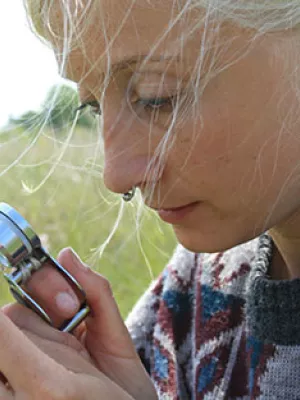
Lina Herbertsson
Researcher

Non-bee insects are important contributors to global crop pollination.
Author
Summary, in English
Wild and managed bees are well documented as effective pollinators of global crops of economic importance. However, the contributions by pollinators other than bees have been little explored despite their potential to contribute to crop production and stability in the face of environmental change. Non-bee pollinators include flies, beetles, moths, butterflies, wasps, ants, birds, and bats, among others. Here we focus on non-bee insects and synthesize 39 field studies from five continents that directly measured the crop pollination services provided by non-bees, honey bees, and other bees to compare the relative contributions of these taxa. Non-bees performed 25-50% of the total number of flower visits. Although non-bees were less effective pollinators than bees per flower visit, they made more visits; thus these two factors compensated for each other, resulting in pollination services rendered by non-bees that were similar to those provided by bees. In the subset of studies that measured fruit set, fruit set increased with non-bee insect visits independently of bee visitation rates, indicating that non-bee insects provide a unique benefit that is not provided by bees. We also show that non-bee insects are not as reliant as bees on the presence of remnant natural or seminatural habitat in the surrounding landscape. These results strongly suggest that non-bee insect pollinators play a significant role in global crop production and respond differently than bees to landscape structure, probably making their crop pollination services more robust to changes in land use. Non-bee insects provide a valuable service and provide potential insurance against bee population declines.
Department/s
- Centre for Environmental and Climate Science (CEC)
- Biodiversity
- BECC: Biodiversity and Ecosystem services in a Changing Climate
- Biodiversity and Conservation Science
Publishing year
2016
Language
English
Pages
146-151
Publication/Series
Proceedings of the National Academy of Sciences
Volume
113
Issue
1
Document type
Journal article
Publisher
National Academy of Sciences
Topic
- Agricultural Science
Status
Published
Research group
- Biodiversity and Conservation Science
ISBN/ISSN/Other
- ISSN: 1091-6490